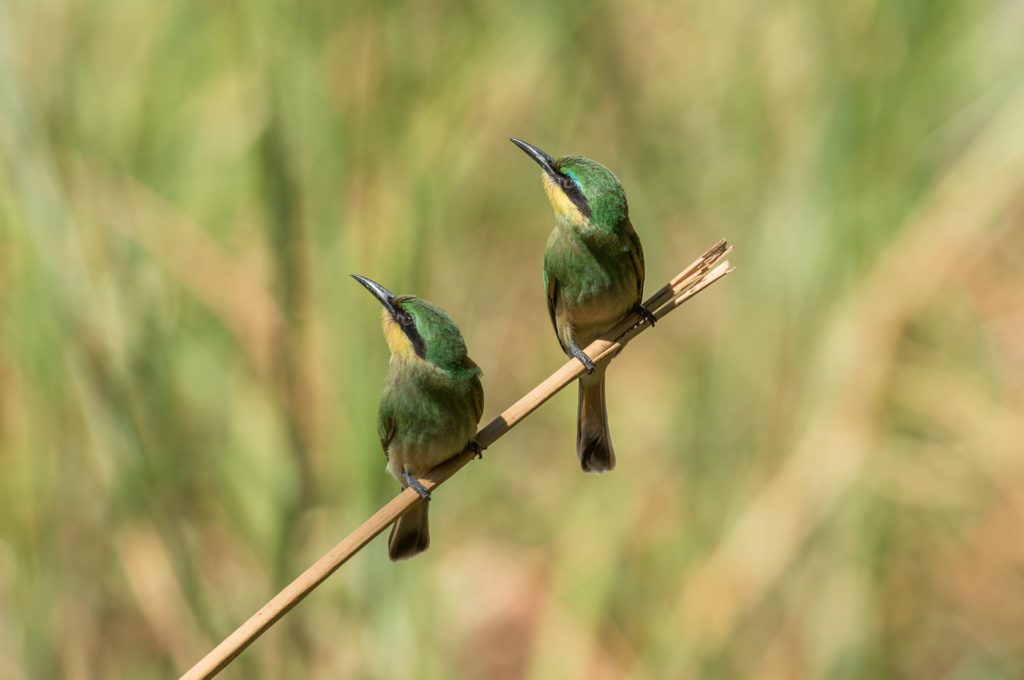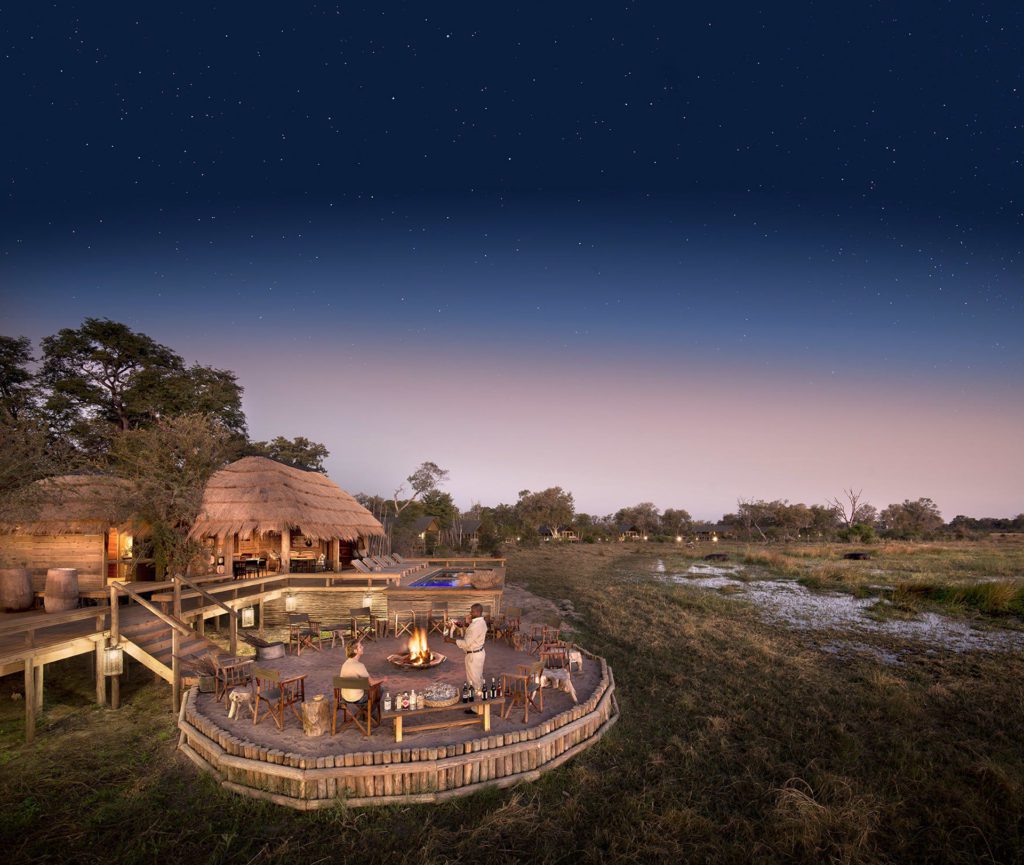Fanned out like a silvery hand, the Okavango Delta trails its delicate fingers through some of the world’s most pristine wilderness, adorned with an array of perfectly polished camps and priceless experiences. Its watery private concessions conceal a photographic African safari heaven – and some of the most stunning game-viewing on the planet.
Okavango Delta – An Origin Story
The beginnings of the Okavango Delta’s complex system of waterways are as bizarre as they are fascinating. Instigated by some sizable tectonic plate dramatics around 60,000 years ago, the once fast-flowing river went wildly off course. All plateaued with no place to go, the waters settled into what is now the world’s largest inland delta, measuring 50,000 square kilometres at high water. And in its midst, life flourished.
The Okavango Delta’s signature palm-fringed islands grew from seed deposits left on termite mounds by passing birds and baboons. Droves of hippos, drawn by this new prime real estate, carved out the winding channels you can see from the air. And its crystal-clear waters, filtered by the Kalahari sand, began to ebb and flow with the annual rains. The Okavango Delta is a magical wetland and a wildlife refuge containing a variety of birds and animals, just about everything that wants to eat you.
The Birds and the Beasts
At the height of Botswana’s dry winter, the Okavango Delta triples in size, fed by Angolan rains. As the floods visibly creep in – inch by inch – so too does the wildlife. Thirsty elephants migrate from across the continent in their thousands, and water-adapted lions wade through the waterlilies on the heels of thronging herds of buffalo and giraffe.
But the wildlife is certainly not contained to the April – September flood season. The permanent water is a constant draw for red lechwe, sitatunga, and carpets of other ungulates that graze on the Okavango Delta’s floodplains throughout the year, watched closely, of course, by lions, leopards, cheetah, wild dogs and even packs of ballsy hyenas. It’s edge-of-your-seat stuff, no matter when you go.
Land vs Water
Depending on their geography, the Okavango Delta’s impressive array of luxury African safari camps and private concessions offer water-based or land-based activities. Or both. Water-based camps are set in areas of permanent water, drawing huge crowds of hippo and elephants – and spectacular birdlife. While they usually offer game drives in some capacity, water-based activities like mokoro excursions are the draw card. Land-based camps are found on the fringes of the delta, on its grassy floodplains. This is game drive central, with plenty of predator action, walking safaris and even night drives. If you want to experience the Okavango Delta in all its glory, you should definitely pair up your land and water experiences – with a breath-taking connecting flight between them.
Get in, let’s go!
Most of the Okavango Delta’s best and most beautiful private concessions are only accessible by air. Maun is the official gateway to the delta (though Kasane is an option too). Maun isn’t much to look at, comprising little more than an international airport, a handful of sun-kissed bush pilots and several thousand donkeys. But it operates as a superbly well-oiled machine. From here, a giant network of tiny little planes (with tails bearing delightfully clever registrations like OWL, LEO and GNU) ferry you to luxury African safari lodges. The game-viewing begins from the moment you lift off, spotting elephants and hippos dotted down below. By the time you’ve ‘unfastened your seatbelt’ you’d have realised that transfer days between camps are actually a highlight of every safari tour.




















